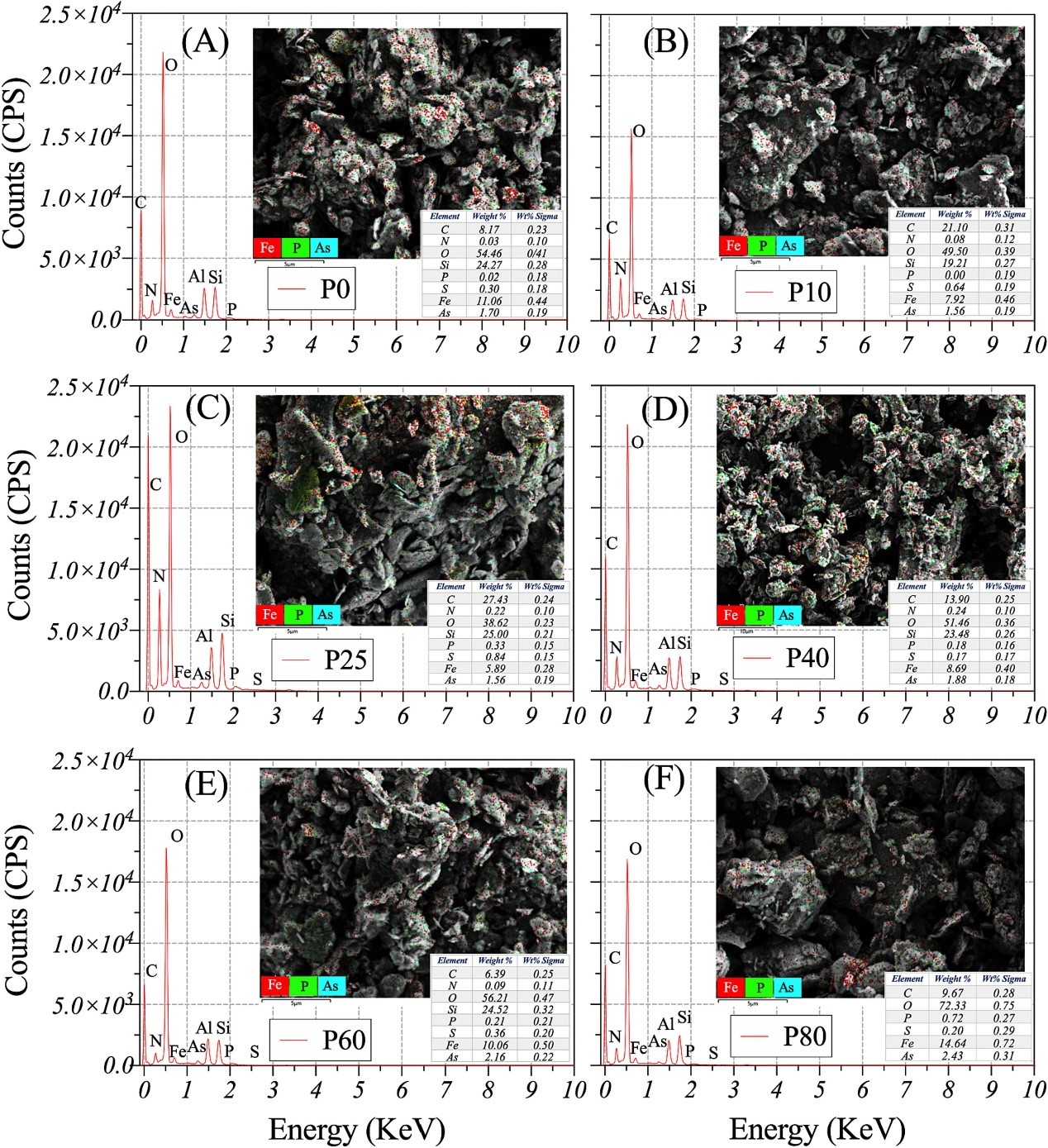Mei K.; Liu J.; Xue L.; Xu J.; Jiang W.; Tan Z.; Li A.; Qu J. and Yan C. 2023. Marine Pollution Bulletin 189.
Mutual transformations of rhizospheric arsenic (As) in pollution-prone mangrove sediments affected by root exudate oxalate were simulated. This study focuses on the effect of oxalate on As release, mobilization, and phase speciation associated with P and Fe was examined under anoxic conditions in time-dependent changes. Results showed that oxalate addition significantly facilitated As–Fe–P release from As-contaminated mangrove sediments. Sediment As formed the adsorptive and the carbonate-binding fractionations, facilitating the re-adsorption processes. Solution As and As5+ correlated with NaOH–P positively but with NaHCO3–P and HCl–P negatively. Dominant Fe3+ (>84 %) from the amorphous Fe regulated suspension changes and then time-dependent co-precipitation with As and P. Sediment P formed strong complexes with Fe oxides and could be substituted for As via STEM analysis. Oxalate ligand exchange, competitive adsorption of oxalate, and Fe-reduced dissolution are confirmed to involve, allowing for an insight As/P/Fe mobilization and fate in mangrove wetland.

The energy spectrum and element composition of freeze-dried sediments (60 mg kg−1 DW) mapping data after oxalate incubation with the P (KH2PO4) addition via detector of energy dispersive analysis X-ray (EDAX). The ultrastructure image of sediments after oxalate incubation with the P addition via scanning transmission electron microscope (STEM) analysis. The red dot represents the Fe distribution in the sediment, the green dot represents the As, and the cyan represents the P; A for the control check (P0); B, C, D, E, and F for 10, 25, 40, 60, and 80 mg L−1 P addition treatments, respectively. (For interpretation of the references to color in this figure legend, the reader is referred to the web version of this article.)

